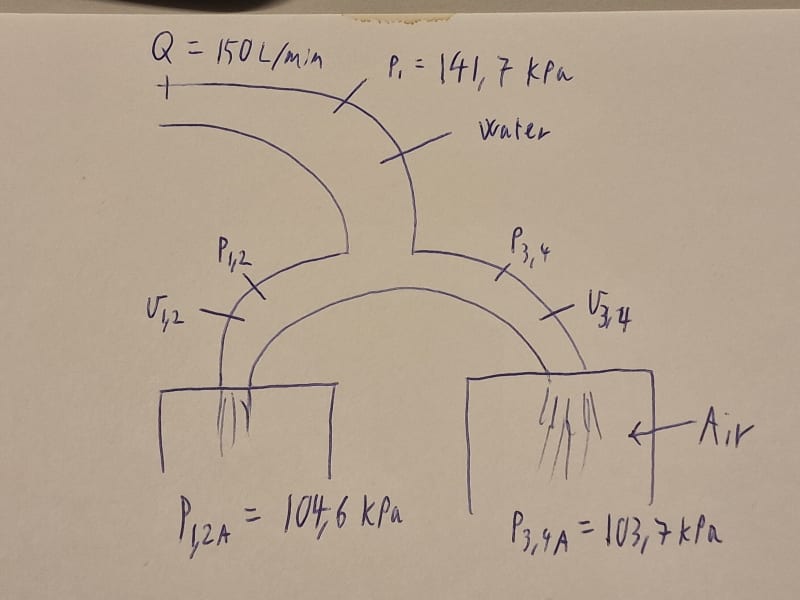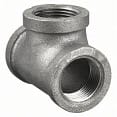Carl-E
Mechanical
- Dec 18, 2023
- 6
Hi!
We are planning a process system. There will be a t-fitting after a water pump with a known flowrate.
After this, there will be a t-piece going to two different chambers with slightly different air pressure.
I have calculated the difference in flowrate on both ends after the t-piece using the following method:
The bernoulli equation is set up, with height=0 and removed from both sides. Pressure is different on both sides of the t-fitting, and this is known. Both velocities are unknown. I solve the equation and get something like 1,75=v1 + v2. Then i use Qtotal=Q1+Q2, and get another way of expressing v1 and v2. I then get two equations with two unknowns, and I can solve it. Ending up with a v1 is 20% greater than v2, which makes sense.
Anyone think this is wrong? I am unsure if it is actually correct to use bernoulli in this way....
Regards Carl from Norway
We are planning a process system. There will be a t-fitting after a water pump with a known flowrate.
After this, there will be a t-piece going to two different chambers with slightly different air pressure.
I have calculated the difference in flowrate on both ends after the t-piece using the following method:
The bernoulli equation is set up, with height=0 and removed from both sides. Pressure is different on both sides of the t-fitting, and this is known. Both velocities are unknown. I solve the equation and get something like 1,75=v1 + v2. Then i use Qtotal=Q1+Q2, and get another way of expressing v1 and v2. I then get two equations with two unknowns, and I can solve it. Ending up with a v1 is 20% greater than v2, which makes sense.
Anyone think this is wrong? I am unsure if it is actually correct to use bernoulli in this way....
Regards Carl from Norway


